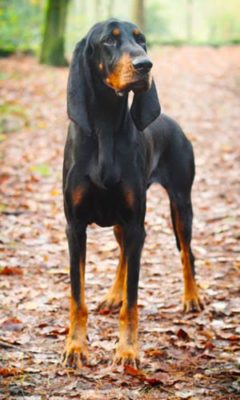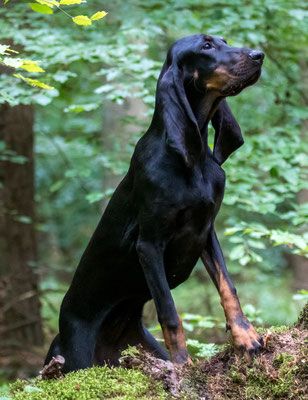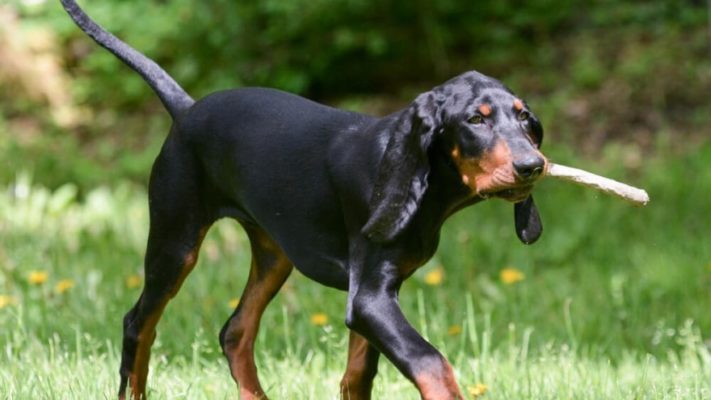Black and Tan Coonhound

The hard-working and fearless Black and Tan Coonhound is not meant for apartment life, but the dog can become a model pet with the right training. If at home, it is quiet and friendly, but outdoors, it takes over a hunter’s instinct. The bark of the Coonhound has an exciting and unusual sound.
Table of Contents
Breed Information
| Another Name | American Black and Tan Coonhound |
| Origin | United States |
| Height | Males 63.5-68.5 cm Females 58-63.5 cm |
| Weight | 32-50 kg |
| Fur | Short, thick |
| Color | Charcoal-black with juicy tan above the eyes |
| Lifespan | 10-12 years |
| FCI Classification | Scent hounds and related breeds |
| Group | Hunting dogs |
| Price | From $450 |
Breed Photos
Origin History
Once upon a time, Rubens’ paintings depicted an extinct species of hound called the Tagliot. So the history of the origin of the Black and Tan Coonhound originates directly from those times.
The breed first appeared in the American South in the late 19th century. The Black and Tan Coonhound also owes its appearance to George Washington, who brought the modern breed’s ancestor from Europe. The night is the time of the Black and Tan Coonhound. It is clear from its second name that this breed specializes in raccoon hunting.
The Coonhound has inherited from its ancestors an excellent sense of smell for stalking. Even if the trail is old or the ground is frozen, the dog can track its prey. U.S. authorities use this breed to find escaped criminals and missing people.
Inbreeding, it was important to achieve a special coloration of the hound, and the American continent gave the cold tolerance for raccoon stalking. The largest kennels of this breed are located in the southeastern United States.
Appearance
The elongated head has a noble shape. The eyes are not too deep, usually dark in color. The creases give the Coonhound’s elegant appearance to the ears. The muscular torso is square, and the dog is very trim. The voluminous chest provides the dog with stamina. The limbs end in strong shoulders. The tail is long and tapered to the tip. The color of the dog is charcoal-padded.
Character
The hard-working and fearless Black and Tan Coonhound is not meant for apartment life, but the dog can become a model pet with the right training. If at home, it is quiet and friendly, but outdoors, it takes over a hunter’s instinct. The bark of the Coonhound has an exciting and unusual sound.
The Black and Tan Coonhound is suitable for hunting both small and large animals. During this activity, the dog shows its stamina and total commitment. Close contact with the dogs will only benefit. Kunkhound adores its master, so you need to spend a lot of your time with the dog.
The Black and Tan Coonhound can be suitable as a guard dog due to its loyal and balanced character. The dog gets along well with children, but it should be remembered that it is better to introduce it at puppy age. If left alone for a long time, the pet can throw a real tantrum.
Lots of exercise during the day will pacify the pet, and it will rest easy at the end of the day. However, the Coonhound is easily put to work despite the weather conditions.
Care
Since the molting of the Coonhound is quite long, brushing is just necessary. The breed does not require any special care. Attention should be paid to keeping the long floppy ears clean. Claws should be trimmed once a month. The dog has abundant salivation, so hygiene will help to avoid irritation on the skin.
Training
The Coonhound is great to train, but it should be started at an early age. The dog can turn out stubborn and harmful if you don’t set your boundaries. The dog should not be pampered either; otherwise, it will be carried away by the process and will stop listening to the master during the hunt.
In addition to discipline, the Black and Tan Coonhound can learn many commands. Do not educate him through punishment; it will not lead to good results.
Common Diseases
Diseases to which the Black and Tan Coonhound is prone are most often related to hunting. Therefore, the hound’s limbs and mucous membranes of the eye are often affected.
Coonhound is susceptible:
- group B hemophilia;
- ear infections;
- hip dysplasia.
It is always worth remembering that the dog spends a lot of time outside. Therefore, routine vaccinations and daily coat and mucous membrane examinations are a must.
Nutrition
The dog does not have any special dietary recommendations; the main thing is that it should be a balanced and healthy food. There should always be a large amount of protein in the pet’s diet. Coonhound spends a lot of energy, so it is worth providing free access to water. But flour and legumes should be avoided.
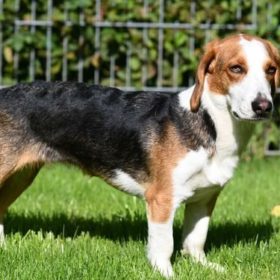 Westphalian Dachsbracke
Westphalian Dachsbracke Burgos Pointer
Burgos Pointer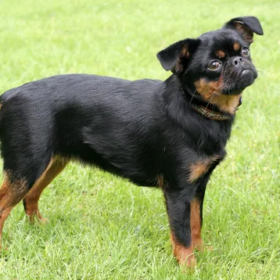 Petit Brabançon
Petit Brabançon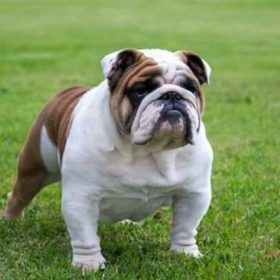 Bulldog
Bulldog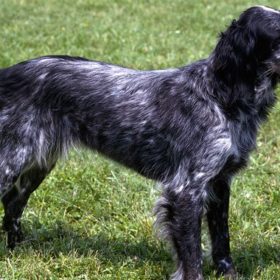 Blue Picardy Spaniel
Blue Picardy Spaniel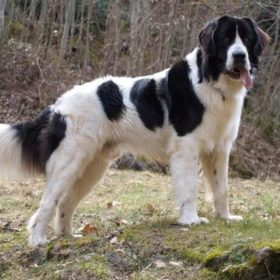 Landseer
Landseer